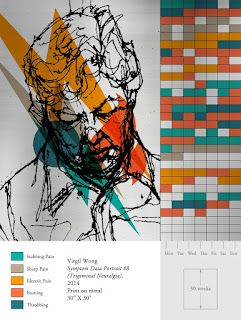Week 6

A fluorescent bunny sounds awesome doesn't it? Eduardo Kac created a bunny that glowed fluorescent due to injection of jellyfish genes into its system. However interesting this project may have been , it incited lots of controversy. Animal activists deemed it unethical and scientists did agree that the project was "silly." I agree with animal activists; for the sake of art, mutilating another species is unethical. I feel the same way about Marta de Menezes' work; she manipulated a butterfly's wings to the point where it had holes in them. Animals develop certain traits that make their survival more likely , but through manipulations such as the ones done from de Menezes and Kac, could harm their well-being even if they were never meant to live in the wild. Kathy High's Transgenic Rats is where the line gets blurry for me; her work isn't just for art but serves as research for decoding "physiological processes and cure diseased ...




